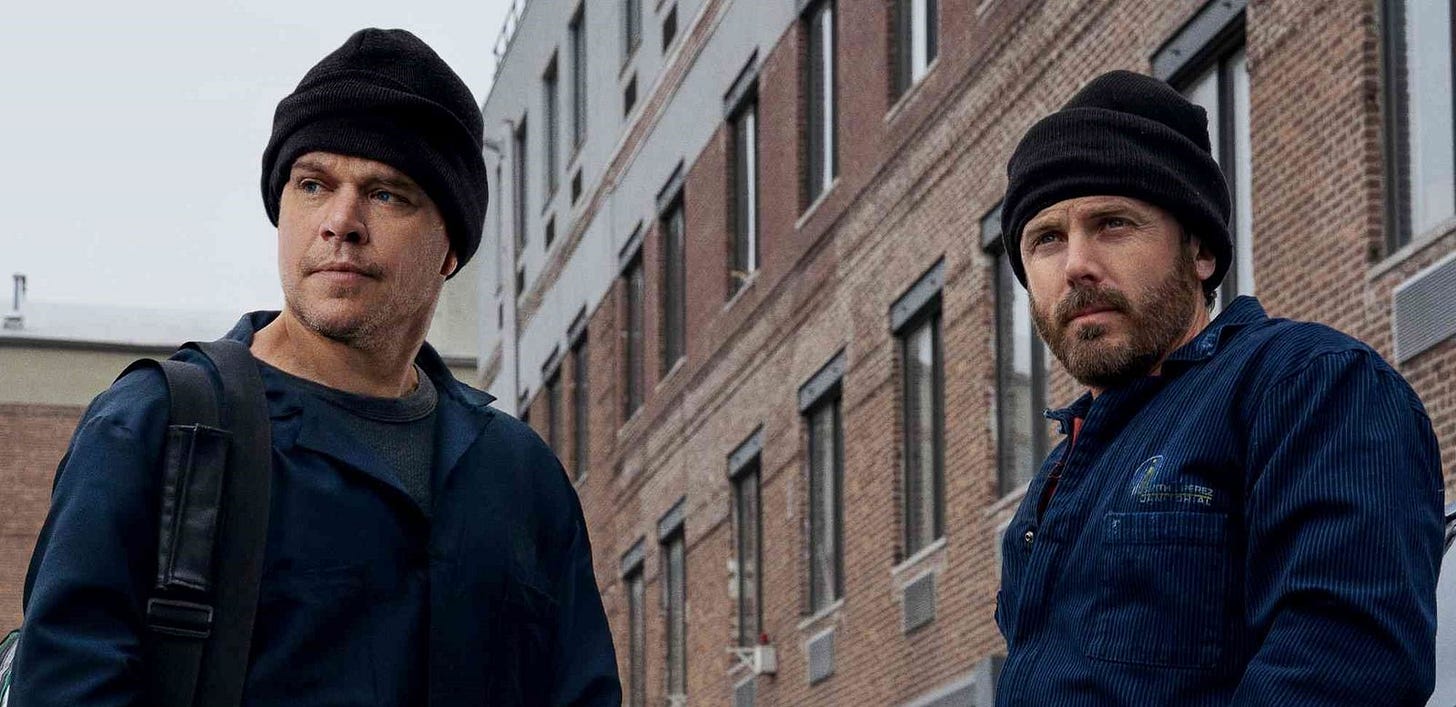It’s well known that in today’s world of information overload, attention has become the most valuable currency. But attention is far more complex than it may appear on the surface — it’s multilayered, emotional, and deeply tied to the quality of our relationships.
The link between attention and relationships is the subject of the recent Boston-based heist movie The Instigators. (Yes, I’m from New England, and no, I’m not sorry.) Matt Damon plays Rory, a man desperate to get his hands on $32,480 to pay off child support debts. He believes the money will provide the financial and emotional security he needs to reconnect with his estranged teenage son. His equally desperate companion, Cobby (played by Casey Affleck), challenges this premise, saying, “Kids don’t give a shit about money. What matters is showing up and watching the kid play hockey.”
Cobby's remark underscores a universal truth: nothing holds more value to children than their parents’ attention. It also invites a question: If Rory is so desperate to reconnect with his son, why has he become so fixated on money? Why isn’t his attention directed where it’s most needed: on rebuilding the emotional connection with his son?
Maybe the bigger question is: why do we seem to pay so much attention to all the wrong things?
Long before the rise of social media, psychoanalysts like Melanie Klein and Donald Winnicott uncovered the deep connection between attention and psychological health. Through their work with troubled children and their parents (usually mothers), they demonstrated that consistent caregiver attunement from day one helps foster a stable sense of self, while neglectful or inconsistent parenting can lead to fragmented identity formation and dysfunctional relationships well into adulthood.
Subsequent psychoanalysts applied these ideas in their work with people who seemed hell-bent on self-destruction. They came to view acting out and self-harming behaviors, like suicide, not merely as symptoms to be cured, but as communications to be understood — expressions of hurt, loneliness, and a desperate longing for recognition.
There was hope embedded within the harm: the hope that someone would pay attention long enough to help them make sense of their pain. The therapist’s curiosity and compassion served as a bridge through which patients could build a better understanding of their experiences and stronger relationships with the world around them.
The psychological connection between attention and emotional well-being isn’t just isolated to therapy. It’s foundational to the fastest growing sector of the economy: the Creator Economy.
Creators sell the illusion of interpersonal connection via social media to gratify deep emotional longings of their audiences while generating revenue for themselves and the brands they partner with. They also seek their own emotional validation through audience engagement and social media metrics. (Also, money). It’s a reciprocal exchange of emotional experience in the absence of any actual human-to-human contact.
The problem with this arrangement is that the connection is not fulfilling or sustaining. It’s real (I would argue), but it doesn’t last. Rather than feeling our needs are being met, we find our longings stirred but never satisfied, leaving us in a state of constant yearning, always wanting more. Which, of course, is the point: the more insatiable the desire to connect, the more money there is to be made.

This frustrating dynamic mirrors a troubling trend in the mental health world: the rise of on-demand therapy offered by mental health tech startups. These platforms promise immediate, convenient solutions for people who are overwhelmed and overbooked. However, much like social media engagement, these services are not designed to foster the deep emotional connection people need to heal and thrive.
In their pursuit of “efficiency,” these companies exploit the urgent desire for attention and validation while sacrificing consistency, attunement, and a ritualized way to connect. If this situation endures, the solutions they offer will fail to make a long-term, meaningful impact and could even exacerbate the mental health problems we are experiencing today.
Psychodynamic theory is essential here. Just as inconsistent caregiving disrupts psychological development, the fragmented nature of attention and interpersonal connection in today’s digital age creates a surging sense of emptiness, even though we’re more “connected” than ever. The rise of mental health tech startups reflects this trend without providing a meaningful path forward.
While lucrative, the commodification of attention has real consequences. In both the creator economy and mental health startups, the demand for constant attention is causing people to lose touch with the healing value of deep emotional engagement. This trend creates a void that simply can’t be filled with revenue growth alone, in the absence of consistent emotional connection.
The issue is not whether these new technologies are “good” or “bad.” Like everything, they’re both. And in any event, they’re not going anywhere. We must embrace them and work together to improve them.

The important question now is: how can we understand the situation we’re in together at this moment in time? And how can we use that understanding to chart a better path forward?
This brings us back to The Instigators. Why is Rory so obsessed with the money? Because as much as he wants to be reunited with his son, he’s also terrified. He’d rather blow up Boston than have an honest conversation with his child. And he’s right! It’s REALLY SCARY to connect with another person, especially when we’re carrying fear, shame, and hurt. And we’re all hurt. Just ask REM.
Despite how intensely we long to be seen, it’s much less scary to connect with someone we’ve never met from the other side of an iPhone. But that doesn’t mean we shouldn’t keep trying. And it doesn’t mean we can’t improve the quality of connections we have online, either.
Thanks for reading! What are your thoughts? I’d love to hear them and appreciate any and all feedback at this early stage in my newsletter.





Moving from Zoom therapy to in-person was terrifying for me. Thank you for the insights!